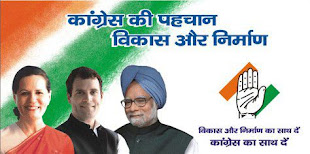Sant Bahadur
Dairy sector in India has acquired substantial growth momentum from 9th Plan onwards, producing 121.8 million tonne milk during 2010-11. Per capita availability of milk reached 269 grams per day in 2010-11. This has not only placed the country on top of milk producing countries in the world, but also demonstrated sustained growth in the availability of milk and milk products for the burgeoning population.
Demand for milk is increasing rapidly in the country. This is primarily due to increasing population and growing incomes accruing from the multitude of central schemes launched for livelihood and employment generation. If we go by the emerging trend, the demand for milk is likely to be about 155 million tonnes by the end of 12th Five year Plan (2016-17) and in the range of 200-210 million tonnes in 2021-22. Annual average increase in the production of milk over the last 10 years has been around 3.5 million tonnes per annum whereas there is a need to reach an average of 6 million tonnes per year over the next 12 years to meet the ever increasing demand.
Dairying has become an important secondary source of income for millions of rural families and has assumed a very important role in providing employment and income generating opportunities. Milk production and marketing system in India is unique. Most of the milk is produced by small, marginal farmers and landless labourers. About 7 crore rural households are engaged in milk production, the majority being small and marginal farmers and landless. About 1.45 crore farmers have been brought under the ambit of 1.45 lakh village level dairy corporative societies. As dairy cooperatives ensure inclusiveness for small holders, especially women, it is desirable that they retain the present 50% share of the marketable surplus handled by the organised sector.
National Dairy Plan-I
The Government has launched an ambitious programme for increasing the productivity of milch animals and thereby increasing the availability of milk in the country. The National Dairy Plan is a Central Sector Scheme. The outlay of the first phase of the project, for 2012-17, is estimated to be about Rs 2,242 crore. Out of total project outlay, Rs. 1584 crore will come from International Development Agency (IDA) as credit, Rs. 176 crore as Central Government’s share, Rs. 282 crore as share of implementing agencies and Rs. 200 crore from NDDB and its subsidiaries for providing technical and implementation support to the project.
Rs. 715 crore of the National Dairy Plan funds will be spent on breed improvement and Rs. 425 crore on animal nutrition. Rs. 488 crore will go for strengthening of village based milk procurement system and Rs. 132 crore for project management and learning.
Objectives
This scheme is aimed at meeting the projected demand of 150 million tonne in next five years by productivity enhancement, strengthening and expanding village level infrastructure for milk procurement and provide producers with greater access to markets. The objective of the NDP is to help increase productivity of milch animals and thereby milk production to meet the rapidly growing demand for milk in the country and provide rural milk producers with greater access to organised milk-processing sector through a scientifically planned multi-state initiative.
It is a six-year plan to be largely financed through the International Development Association (IDA) of the World Bank, and implemented by National Dairy Development Board (NDDB) through End Implementing Agencies (EIAs) located in states. Funding will be through a line of credit from IDA which along with share of Government will flow from the Department of Animal Husbandry, Dairying and Fisheries to NDDB and in turn to eligible EIAs.
EIAs comprise State Government, State Livestock Boards, State Cooperative Dairy Federations, District Cooperative Milk Producers Unions, subsidiaries of statutory bodies, ICAR institutes, and veterinary/dairy institutes and universities and any other entity decided by the National Steering Committee to be set up under the National Dairy Plan. The EIAs will be eligible for funding under various components based on eligibility criteria which will comprise geographical, technical, and financial and governance parameters. Pattern of funding under the scheme will be 100% grant-in-aid for nutrition and breeding activities.
Focus States
The NDP-I is to be implemented in States where the respective Governments commit to undertake the necessary regulatory, policy support to prepare an environment for successful implementation of the scheme. The focus of the scheme will be on the areas with higher potential in 14 major milk producing states, namely Andhra Pradesh, Bihar, Gujarat, Haryana, Karnataka, Kerala, Madhya Pradesh, Maharashtra, Odisha, Punjab, Rajasthan, Tamil Nadu, Uttar Pradesh and West Bengal. These states contribute to 90% of milk production in the country. However, in terms of benefits the coverage of the scheme will be countrywide.
Strengthening Village-Based Milk Procurement Systems
Village-based procurement system will be expanded by strengthening existing co-operatives and facilitating the setting up of producer companies or new-generation co-operatives. About 13 lakh milk producers in 23,800 additional villages are expected to be covered. Alongside, capacity building, training and education programmes will get due prominence to promote technologies and improved practices at the village level.
Benefits
In terms of overall benefits, the NDP will put in place a scientific and systematic process which is expected to take the country on the path to improving the breed of milk producing animals in a consistent and continuous manner. It will make prudent use of country’s resources, lead to reduction in methane emissions, improve the quality of milk being marketed, help strengthen regulatory and policy measures to provide an enabling environment for future growth of dairy sector and contribute to improving the livelihoods of small milk producers who form the backbone of India’s milk production system.


























Milk provide lot of vitamins and protein. It is helps the body in neutralising free radicals. It can control sugar level. It is best for weight reduce.
Stage 4 breast cancer